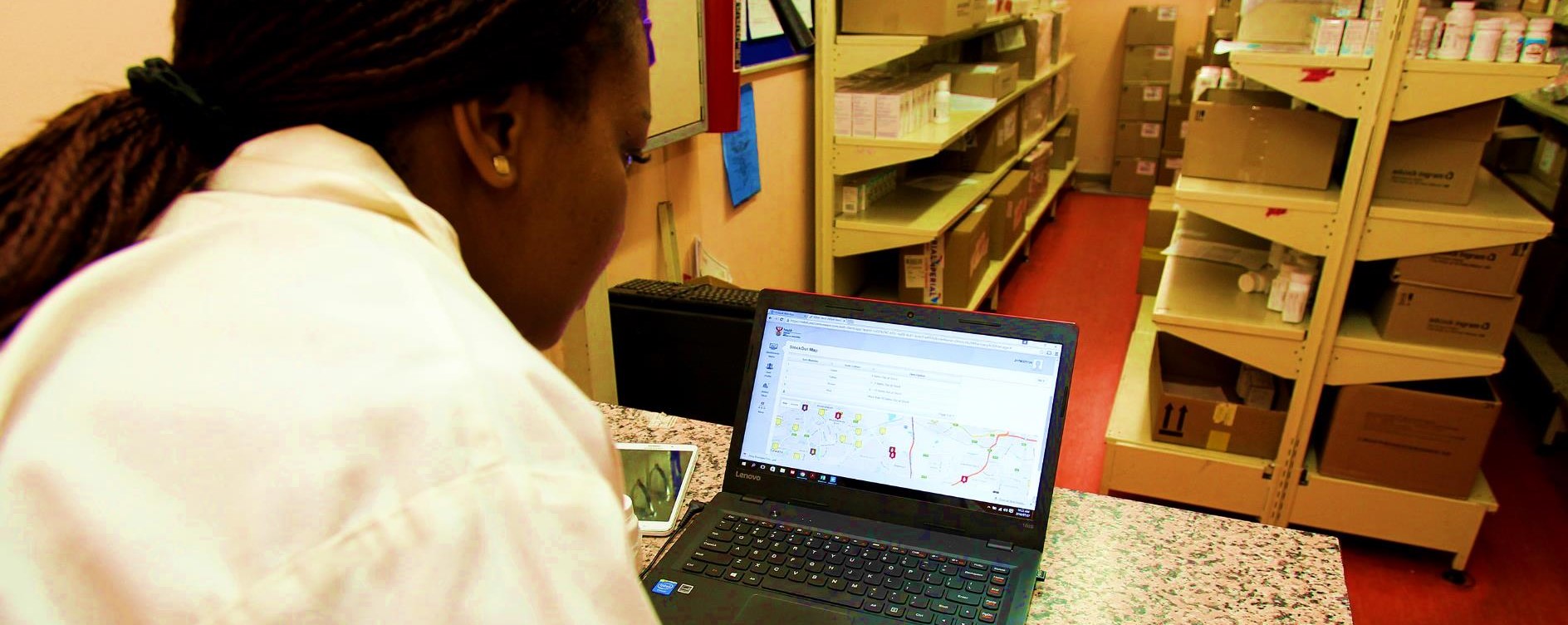The NSC is a web-based performance monitoring and evaluation tool. Using nationally agreed key performance indicators, medicine availability data from health establishments, pharmaceutical depots, and suppliers of medicine is visualized on dashboards, providing a holistic view of medicine availability throughout the South African public health medicine supply chain. With the introduction of RxSolution mostly in hospitals and SVS in PHCs, most health establishments demonstrated improved inventory management.
As is the case with any new system, users and viewers of the NSC's dashboard reports were skeptical about the tool’s accuracy. Manual reports were still being used in the province in parallel with the electronic data collection tools. The manual reports were mostly used to assist with redistribution of medicines. When it came to technology, health care providers created WhatsApp groups to circulate some of the information from these reports and facilitate the redistribution of medicines between clinics with surplus stock and those with shortages. Despite the availability of this information on the NSC, district pharmacists seemed slow to adopt the new technology, regardless of its ability to provide visibility of medicine across all levels of care. The introduction of the NSC in the Free State in 2019 enabled the monitoring and visibility of medicines across the province, paving the way for evidence-based and timeous interventions, but only if health care providers adopted the use of the system.
To increase utilization of the new technology, GHSC-TA through its Provincial Support Team provided on-the-job support to licensed users to improve the NSC's use and institutionalization. Through this support, NSC users improved their knowledge of the tool and began to enjoy the benefits of having full visibility across the supply chain when managing medicines in their health establishments. As a result, the use of the historic manual spreadsheets and tick sheets and resultant consolidated reports lost traction, as these were shown to be less accurate and reliable when compared to the data provided by SVS and RxSolution presented on dashboards on the NSC.
During one of the Free State Pharmacist Forum meetings, the Pharmaceutical Services Deputy Manager, Mr. Patrick Kgapola, highlighted that health establishments do not have any reason to continue manual reporting, as all the information is already consolidated and is available at their fingertips in a user-friendly manner.
The use of the NSC has provided district pharmacists with accurate and up-to-date information to monitor medicine availability. The information drawn from the dashboards provides information to support decision making and supports improved inventory management at all levels of care. With this new technology, fewer stockouts have been reported and rapid remedial actions can now be taken to avoid stock availability issues.



